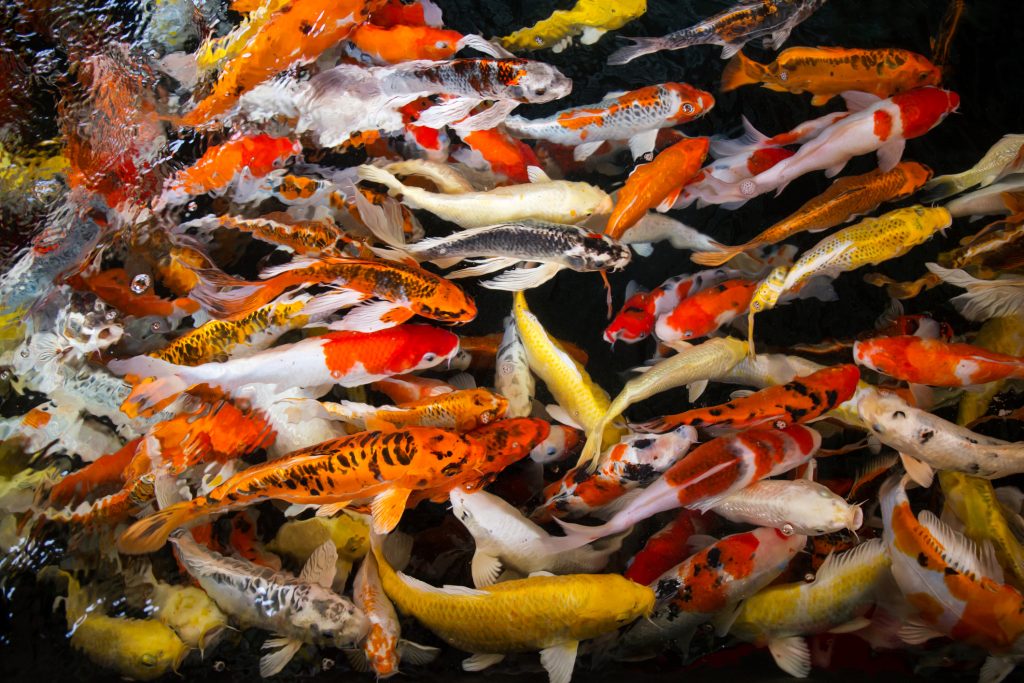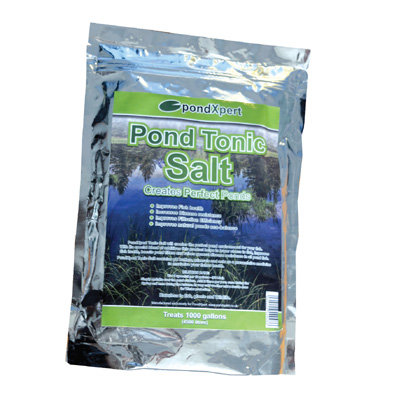How do I calculate the volume of my pond? How many fish can I have in a pond? What if the fish look like they have a disease?
 How do I calculate the volume of my pond?
How do I calculate the volume of my pond?
It is important to ensure a pond is not overstocked as it can be harmful to fish health, as well as resulting in a dirty and un-attractive pond. To calculate the volume of the pond you simply need to do the following calculation:
• Pond Volume in Litres = Length (metres) x Width (metres) x Depth (metres) x 1000
• Length x Width x Depth x1000
Based on this, the volume of a 3m x 2m x 1m pond is calculated with the equation:
• 3x2x1x1000 = 6,000 Litres
Remember this calculation is only for metric units you must convert feet into metres before you do this.
• To convert feet to metres, divide the measurement by 3.28 (i.e 6ft divided by 3.28 is approximately 1.8m).
• To convert metres to feet, times the measurement by 3.28 (i.e 1.5m times by 3.28 is approximately 5ft)
How many fish can I have in my pond?
As a general rule you can use the following guidelines for suitable fish stocks:
• Goldfish – 3kg of fish per 1000 litres of pond water e.g. 4000 litre pond will support up to 12kgs of fish
• Koi – 1kg of fish per 1000 litres of pond water e.g. a 4000 litre pond will support up to 4kgs of Koi
Remember Koi are much dirtier fish and produce a lot more waste. This means that they need a better level of filtration and normally cost a lot more to keep. Koi ponds should also be at least 1m deep over 40% of the surface area.
How do I know which Pump and Filter to choose?
It is important to match the pump and filter set with the pond volume and fish stock. The first thing to do is to match the pump size (circulation rate) to the pond size. This can be used as a general guide:
• Standard (goldfish / small fish stock / no fish): The pond water should be turned over once every 2 hours i.e. a 6,000 litre pond needs a 3,000 LPH pump
• Koi Pond (Heavy stock): The pond water should be turned over once an hour i.e. a 6,000 litre pond needs a 6,000 LPH pump
The next job is to match the filter to the pump. All the filters have a maximum flow rate, and this should be as closely matched to the pump (without the pump exceeding it) as possible. Most of our filters and pumps are already matched together for you, so it therefore becomes simply a job of matching the correct type of filter to the correct type of pond.
My fish have a disease, what should I do? (Useful Blogs: Diagnose your Fish)
 Fish Diseases can vary greatly in type as well as severity. As a general rule it is important to keep water quality as high as possible which will avoid the majority of diseases. The water can also routinely be treated with a General Tonic and Pond Salt which will also help to combat any diseases. You may find out blog post on how to Diagnose your Fish useful.
Fish Diseases can vary greatly in type as well as severity. As a general rule it is important to keep water quality as high as possible which will avoid the majority of diseases. The water can also routinely be treated with a General Tonic and Pond Salt which will also help to combat any diseases. You may find out blog post on how to Diagnose your Fish useful.
The first thing you should do is test your water with either the Tetra Pond Test 6-in-1 or the Blagdon Pond Health Test Kit. This should give you an indication as to whether there is a chemical cause for the illness; there may be an imbalance with the ammonia, nitrites, nitrates, phosphates, pH or chlorine levels. The test will be able to identify this, allowing you to resolve it quickly.
General Tonic – This contains formaldehyde and the tonic should be used as a general treatment whenever the fish are stressed or the water quality is poor. It can also be added monthly to prevent other fish diseases that derive from parasite, bacterial, or fungal organisms. Good times to use it if only sporadically being used is in the spring to help fish recover from the winter, when introducing new fish to the pond or after a water change.
Pond Salt – This is literally adding salt to the water. Many pond keepers simply use kitchen salt, although specific pond salt is better. This addition helps to boost the fishes immune system which allows it to cope with diseases themselves. The level of salt which should be added changes according to the reason. It is important not to put too much in as this can do harm to the fish. Just in the same way putting them in sea water would do. A rough guide can be seen below based on the Blagdon Pond Guardian Tonic Salt. Once the salt has been added it will remain in the water indefinitely unless removed via some method of water change.
What pond maintenance should I do throughout the year and when? (Useful Blogs: Pond Calendar, Pond Checklists)
January and February
• Repair damaged pond liners to avoid disturbance as much as possible
• Prevent from freezing
April
• Divide Water Lilies
• Clean and repair container and small ponds
• Plant re-pot and divide plants
May
• Maintain ponds water quality
• Prevent algae - add oxygenating plants and lilies so that they cover more than 50% surface area
• Divide Water lilies
June
• Keep free from blanketweed and remove before it takes over
July and August
• Build Pond to attract wildlife and add interest
• Keep pond clean – blanketweed, rotting leaves and flowers
September and October
• Create Mini Pond
• Prepare ponds for autumn – removing dead leaves on surface and cut back any plants which have grown too much
• Keep pond free of leaves and debris - remove dead and dying foliage, install a cover net over the pond.
November
• Add a water feature
• Build a pond
• Get ponds ready for winter
• Check for damaged pond liners
December
• Maintain pond over winter – ensure an area of open water exists – float a ball / use electric heater
If you have any queries, please email us on info@pondkeeper.co.uk.